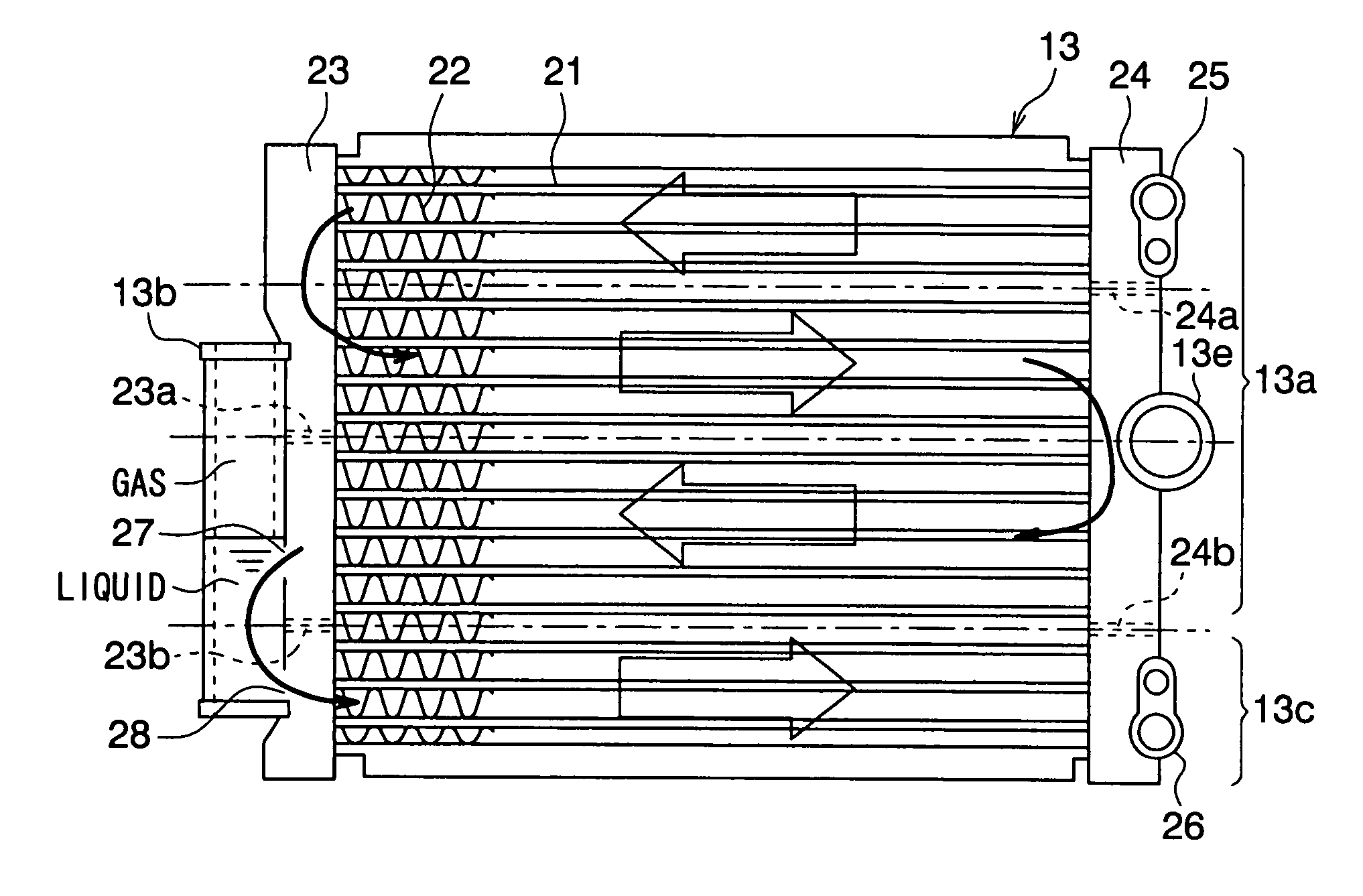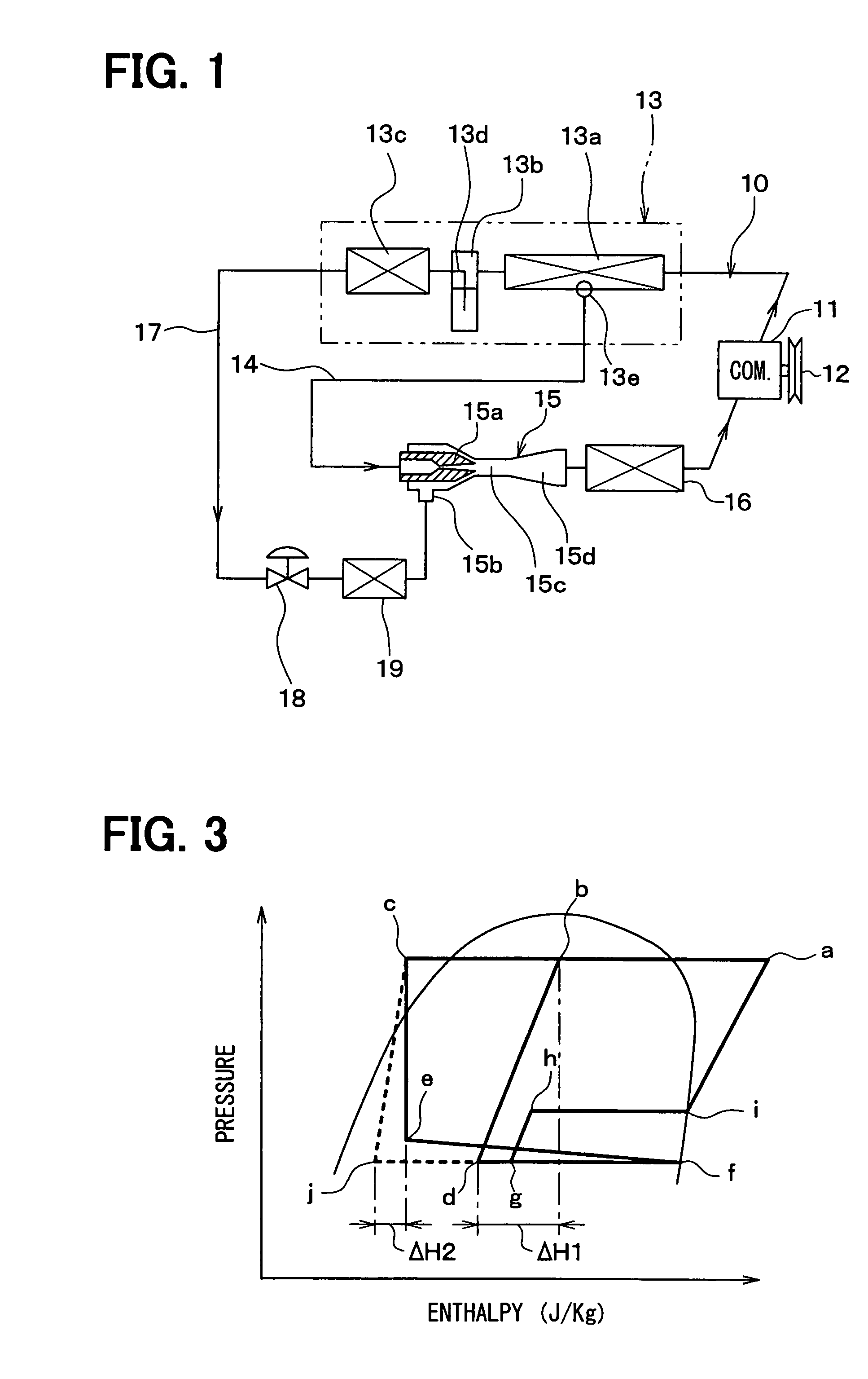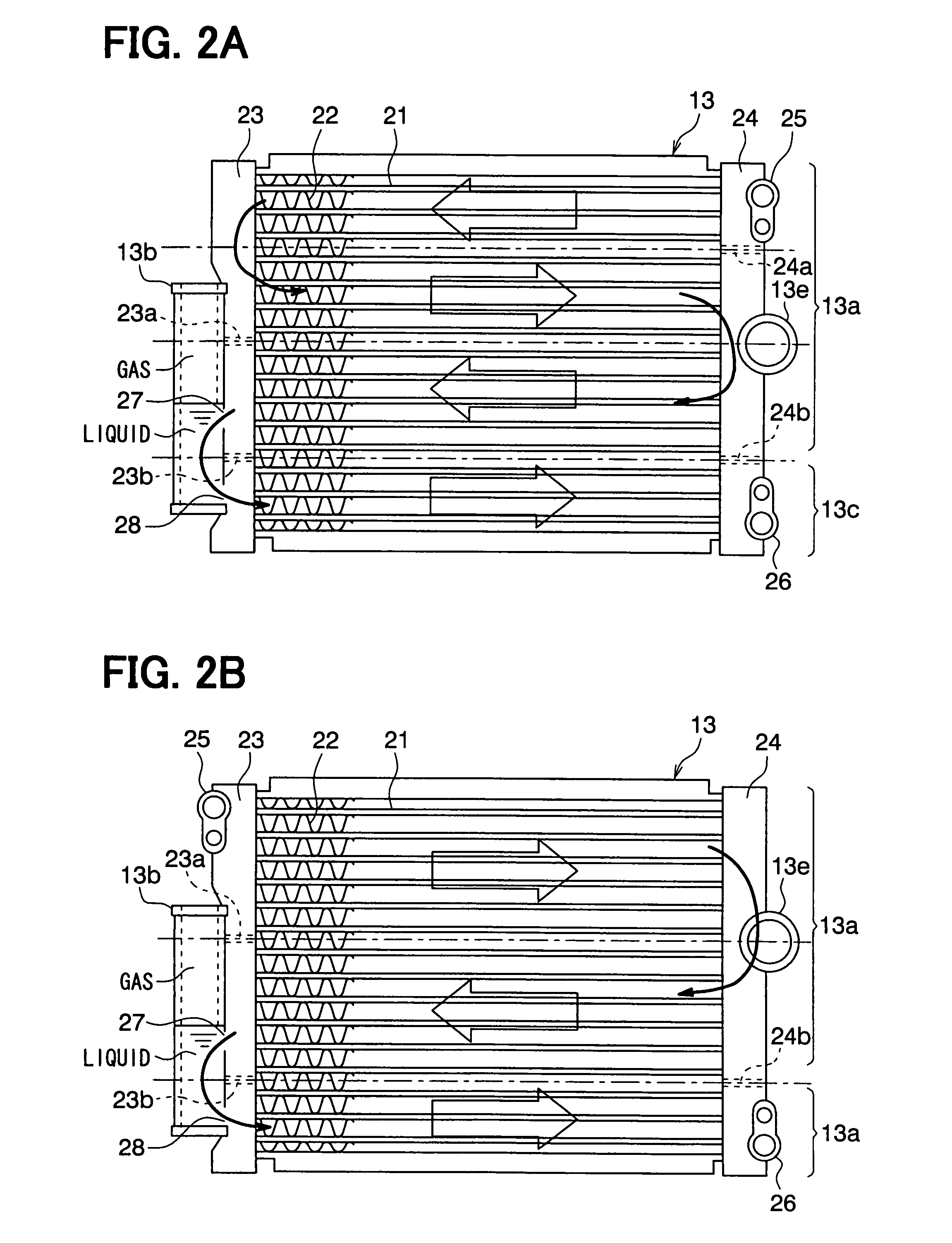Refrigerant cycle device with ejector
a technology of refrigerant cycle and ejector, which is applied in the direction of subcoolers, transportation and packaging, lighting and heating apparatus, etc., can solve the problem of not being able to enhance the effect of cycle efficiency improvement, and achieve the effect of increasing the enthalpy of refrigerant flow, increasing the refrigerant pressure, and small heat radiating amoun
- Summary
- Abstract
- Description
- Claims
- Application Information
AI Technical Summary
Benefits of technology
Problems solved by technology
Method used
Image
Examples
first embodiment
[0025]A first embodiment of the present invention will be now described with reference to FIGS. 1 to 3.
[0026]In this embodiment, a refrigerant cycle device 10 is constructed of a vapor-compression subcritical cycle using refrigerant whose high pressure does not exceed the critical pressure, such as flon-based or HC-based refrigerant, for example.
[0027]In the refrigerant cycle device 10 of this embodiment, a compressor 11 for sucking and compressing the refrigerant is rotatably driven by an engine for vehicle running (not shown) via a pulley 12, a belt, and the like. The compressor 11 for use may be either a variable displacement compressor for being capable of adjusting a refrigerant discharge capacity depending on a change in compression capacity, or a fixed displacement compressor for adjusting a refrigerant discharge capacity by changing an operating efficiency of the compressor by intermittent connection of an electromagnetic clutch. The use of an electric compressor as the comp...
second embodiment
[0067]FIG. 4 shows a refrigerant cycle device 10 according to a second embodiment of the invention.
[0068]In the refrigerant cycle device 10 of the second embodiment, the first evaporator is withdrawn with respect to the refrigerant cycle device 10 of the first embodiment shown in FIG. 1. Thus, the invention may be applied to the refrigerant cycle device 10 in which one evaporator 19 is located only between the downstream side of the refrigerant flow of the throttle mechanism 18 and the refrigerant suction port 15b of the ejector 15.
[0069]In the second embodiment, the other parts of the refrigerant cycle device are similar to those of the above-described first embodiment.
third embodiment
[0070]FIG. 5 shows a refrigerant cycle device 10 according to a third embodiment of the invention.
[0071]In this embodiment, the first evaporator 16 is withdrawn from the cycle structure of the first embodiment shown in FIG. 1, and instead, a low-pressure side vapor-liquid separator 31 is provided on the downstream side of the ejector 15. This vapor-liquid separator 31 separates the low-pressure refrigerant on the downstream side of the ejector 15 into saturated liquid-phase refrigerant and saturated vapor-phase refrigerant to store therein the saturated liquid-phase refrigerant, while allowing the saturated vapor-phase refrigerant to flow toward the suction side of the compressor 11.
[0072]A liquid refrigerant outlet 32 is provided at the bottom of the low-pressure side vapor-liquid separator 31 for taking out the saturated liquid-phase refrigerant. The liquid refrigerant outlet 32 is connected to a refrigerant passage 34 including a check valve 33. The outlet of the refrigerant pass...
PUM
 Login to View More
Login to View More Abstract
Description
Claims
Application Information
 Login to View More
Login to View More - R&D
- Intellectual Property
- Life Sciences
- Materials
- Tech Scout
- Unparalleled Data Quality
- Higher Quality Content
- 60% Fewer Hallucinations
Browse by: Latest US Patents, China's latest patents, Technical Efficacy Thesaurus, Application Domain, Technology Topic, Popular Technical Reports.
© 2025 PatSnap. All rights reserved.Legal|Privacy policy|Modern Slavery Act Transparency Statement|Sitemap|About US| Contact US: help@patsnap.com



